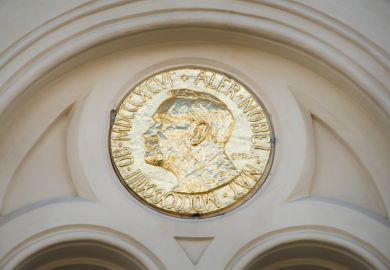Time was when to write about drugs was almost as taboo as to push them. And although recent years have brought a succession of fine studies of individual substances - opium, cannabis, cocaine - Mike Jay is correct in claiming that his is the first attempt to survey the 19th-century drugs scene at large, on both sides of the Atlantic. In so doing, he targets two fallacies, the establishment line that "drugs" are a self-evident menace that any responsible person would shun and that society must outlaw, and the naive belief of those in the "underground culture" that psychedelic heaven has just been discovered by themselves.
Jay documents the prevalence of narcotics consumption in the 19th century (in those days, perfectly legal), the widespread public interest in their properties, and the broad tolerance of the practice. Not only could poets wax lyrical about their properties, but distinguished public figures such as William Wilberforce were known to have an opium habit (in his case to counter ulcers), conducted their lives perfectly capably, and were judged barely the worse for it.
Above all, Jay shows how absurd it is to stigmatise all "drugs" indiscriminately, as a single bogey. Narcotics and stimulants came in all shapes and sizes, and each had a distinctive history.
Opium had been around for centuries and was widely used in the Fens against malaria. It began to pose a real health threat only when the isolation of morphine and heroin, together with the invention of the hypodermic syringe, created the capacity to deliver really powerful shots. Nitrous oxide, by contrast, was utterly novel, since the gas was not even produced until the "new chemistry" of the late 18th century, when, as is shown in Jay's best chapter, its psychoactive properties were investigated in a pioneering series of intrepid, if exhilarating self-experiments by Humphry Davy and his associates, the young Coleridge and Southey included. "Laughing gas", Jay suggests, would have made the perfect recreational drug but for one drawback: its lack of a convenient, mobile mode of delivery. Not until its anaesthetising properties were fully grasped did it find its surgical applications, and then it was quickly superseded by ether and chloroform.
Jay neatly shows that drugs did not have the histories we, from our present-day perspective, might expect: their 19th-century profiles rarely correspond to their contemporary reputation. Cannabis was once the hard stuff. The accounts of Baudelaire and the other bohemians who constituted Paris's Club des Haschischins in the 1860s show they evidently hallucinated sensationally on hash. Why? Because in those days, it was eaten in massive doses. Why did it not then sweep the nation? Because, Jay suggests, its image was too closely associated with arty cliques.
Cocaine tells a contrary story. Coca leaves had been chewed since time immemorial by South American peasants to relieve hunger and fatigue. In the 19th century, coca found its way into the recreational culture of the West in the form of tonic wines (the most famous, Mariani's, was endorsed by two popes), drinks such as Coca-Cola and as an effective local anaesthetic. Why then did it so quickly achieve such a sinister reputation? The advent of pharmaceutical regulation, especially in the United States, pushed it into quack preparations and to the social margins; the anti-alcohol drive encouraged drinkers to switch to cocaine; and a scare campaign identified cocaine use with criminal blacks.
Each drug tells its own tale, but Jay has one reiterated moral: the trouble with drugs lies only minimally in their objective dangers, but rather in the circumstances in which they are marketed - or demonised and thus edged into a black market.
Jay does not preach, but his stance is clear: the de facto laissez-faire that prevailed for most of the 19th century had real merits; the highly politicised "war on drugs" that was to characterise late Victorian times and the 20th century was irrational and hopelessly counter-productive.
If his book has a weakness, it lies not in espousing a nostalgic vision of a narcotic golden age of yesteryear, but in the rather rushed and simplistic explanations Jay offers for the transition to the age of demonisation. In his chapter on opium, he gets into a lather about the increased criminalisation in the late Victorian and Edwardian eras of one of medicine's few truly effective agents, but he gives far too skimpy an account of how and why that change took place.
The root problem is the artificiality of his 1900 cut-off date, which runs athwart his instinct to take his story up to the present. On the strength of this intelligent and urbane book, one wishes he would.
Roy Porter is professor in the social history of medicine, Wellcome Institute.
Emperors of Dreams: Drugs in the Nineteenth Century
Author - Mike Jay
ISBN - 1 873982 48 8
Publisher - Dedalus
Price - £9.99
Pages - 7



